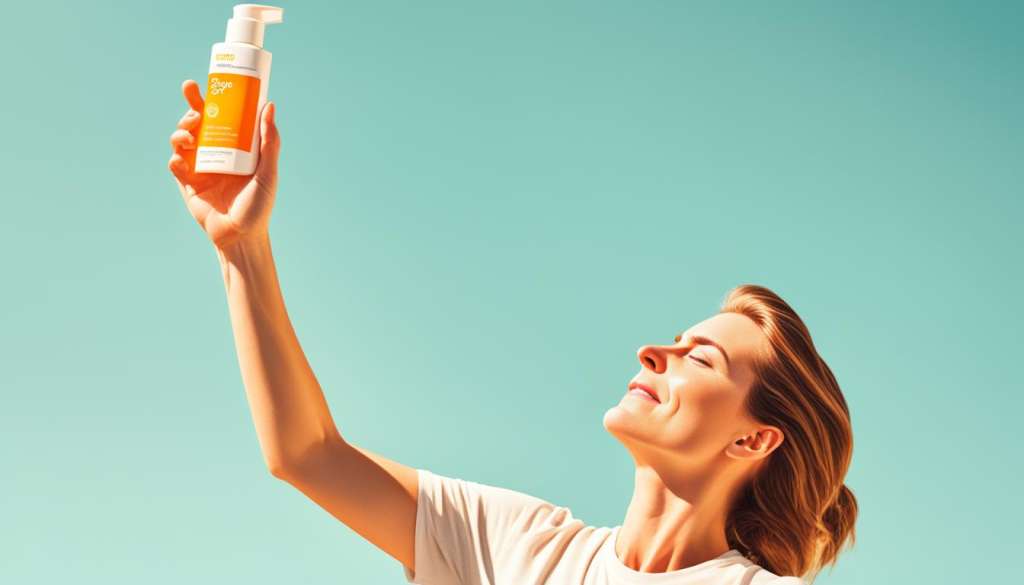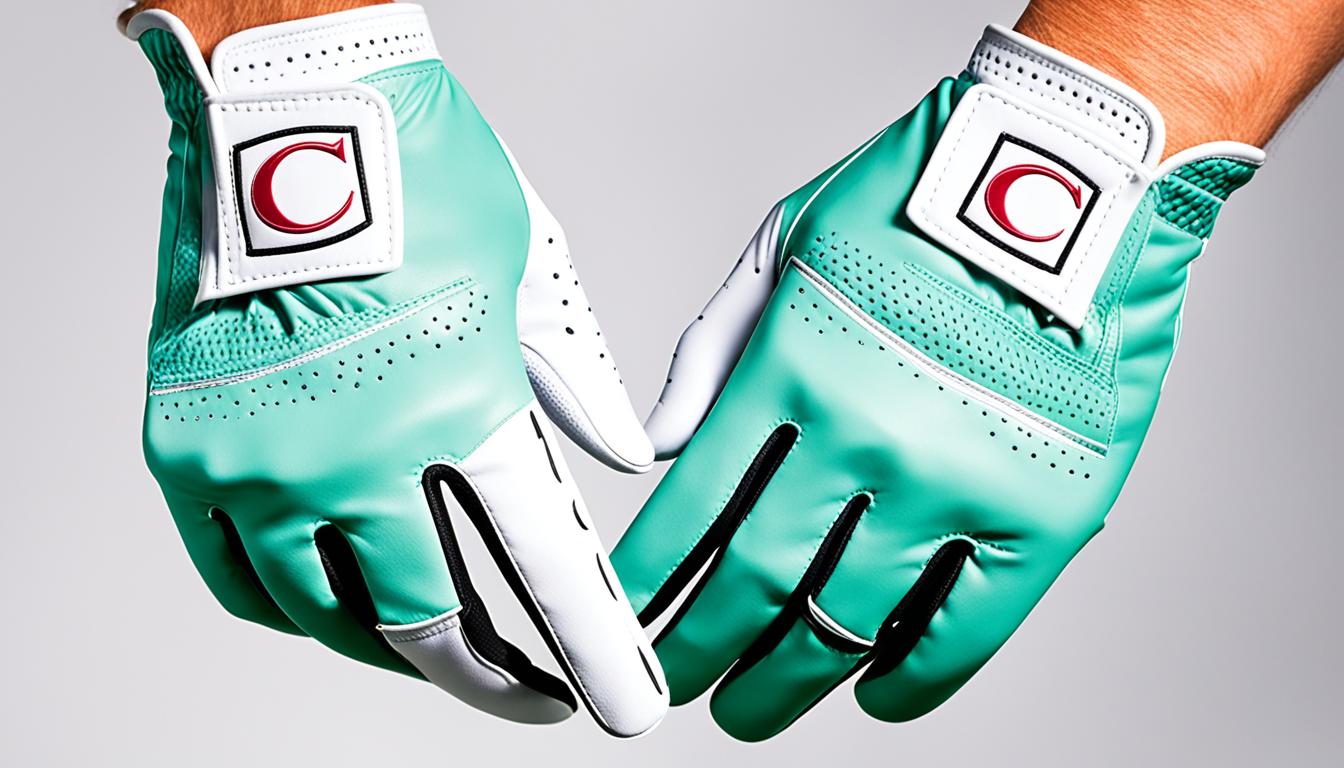Protecting your skin from the sun’s harmful rays is essential all year. Sun safety helps prevent skin damage, early aging, and lowers skin cancer risk. By using proper UV protection, you can safely enjoy the outdoors while keeping your skin healthy.
Preventing skin cancer begins with knowing how to apply sunscreen correctly and picking the right SPF. In 2024, over 100,000 new skin melanoma cases are expected in the U.S. This shows how important it is to improve our sun protection habits. This guide will show you how to choose the best sunscreens and adopt safe behaviors to protect your skin from UV radiation.
Understanding UV Radiation and Its Effects
UV radiation from the sun can greatly affect your skin’s health. It’s important to know about the types of UV rays and their effects. This knowledge helps you protect your skin better. Let’s dive into UV radiation and its effects on your skin, both short and long-term.
Types of UV Radiation: UVA and UVB
The sun sends out two main types of ultraviolet rays: UVA and UVB. UVA rays go deep into your skin, causing early aging and wrinkles. UVB rays mainly hit the surface, leading to sunburn. Both types harm your skin cells and raise your risk of skin cancer.
| UV Ray Type | Primary Effects | Penetration |
|---|---|---|
| UVA | Skin aging, wrinkles | Deep skin layers |
| UVB | Sunburn, surface damage | Outer skin layer |
Short-term and Long-term Effects of Sun Exposure
Sun exposure can have both immediate and lasting effects on your skin. Short-term effects include sunburn, tanning, or skin irritation. Over time, it can lead to skin aging, dark spots, and a higher risk of skin cancer. Those with fair skin, light hair, or a family history of skin cancer are more at risk.
The Link Between UV Radiation and Skin Cancer
UV radiation is a known carcinogen linked to skin cancers like melanoma. Repeated exposure to UVA and UVB rays can damage your DNA, causing mutations that may lead to cancerous growths. It’s vital to protect your skin from UV radiation to lower your risk of skin cancer and keep your skin healthy.
UV damage affects everyone, no matter the skin color. By understanding UV radiation and its effects, you can take steps to protect your skin. This helps keep your skin healthy for the future.
The Importance of Year-Round Sun Protection
Sun protection isn’t just for summer days at the beach. Your skin needs protection from harmful UV rays all year. Many people think they don’t need sun protection in winter, but it’s key for healthy skin.
Cloudy days can still be dangerous. Up to 80% of UV rays can go through clouds, harming your skin. So, you’re at risk of sun damage even when you’re just going about your day.

Using sunscreen every day helps prevent UV damage. It lowers your risk of skin cancer and early aging. Don’t forget to put sunscreen on often-missed spots like your ears, neck, and hands.
Seasonal Sun Protection Tips
- Winter: Use a moisturizing sunscreen to combat dry skin
- Spring: Don’t forget to protect your skin during outdoor activities
- Summer: Reapply sunscreen every two hours, especially when swimming
- Fall: Continue sun protection even as temperatures cool
Protecting your skin all year is more than just about sunscreen. Wear protective clothes, stay in the shade, and limit sun time during peak hours. These habits are key to good skin health and will help you in the long run.
| Season | UV Index | Recommended SPF | Additional Protection |
|---|---|---|---|
| Winter | 2-4 | 30 | Moisturizer, lip balm |
| Spring | 5-7 | 30-50 | Hat, sunglasses |
| Summer | 8-10+ | 50+ | UPF clothing, shade |
| Fall | 3-5 | 30-50 | Protective clothing |
Choosing the Right Sunscreen
Finding the right sunscreen can feel like a big task with so many choices. Let’s simplify the process by focusing on what matters most for your skin.
SPF Explained: What the Numbers Mean
SPF ratings show how well a sunscreen protects against UVB rays. Higher SPF means better protection, but the extra benefit is small after SPF 50. For everyday use, pick a sunscreen with SPF 15 or higher. For outdoor activities, go for SPF 30 or more.
Broad-Spectrum Protection: UVA and UVB Coverage
Broad-spectrum sunscreens protect against both UVA and UVB rays. UVA rays cause aging, while UVB rays lead to sunburns. Make sure to choose products labeled as broad-spectrum for full protection against harmful UV rays.
Water-Resistant vs. Waterproof: Understanding the Difference
No sunscreen is waterproof. Water-resistant sunscreens stay effective for 40 or 80 minutes when swimming or sweating. Always reapply after getting wet or sweating a lot, even if the sunscreen says it’s water-resistant.
| Sunscreen Type | SPF Rating | Protection Duration | Best For |
|---|---|---|---|
| Daily Use | 15+ | 2 hours | Regular activities |
| Outdoor Activities | 30+ | 2 hours | Extended sun exposure |
| Water-Resistant | 30+ | 40-80 minutes | Swimming, sweating |
The FDA regulates sunscreen as a drug to ensure it’s safe and works well. By knowing these key points, you can pick a sunscreen that fits your skin type and lifestyle.
Proper Sunscreen Application Techniques
Applying sunscreen correctly is key for sun protection. It’s important to use the right amount and make sure it’s spread evenly. Let’s look at how to apply sunscreen correctly.

Begin by applying sunscreen 15 minutes before going outside. This lets it soak into your skin for the best protection. Aim for about one ounce of sunscreen for your whole body, which is like a shot glass full.
Don’t forget these often-overlooked spots:
- Ears
- Nose
- Lips
- Back of neck
- Hands and feet
- Along the hairline
Remember to reapply sunscreen often. Do it every two hours, or more if you’re swimming or sweating. This keeps you protected all day.
For spray sunscreens, spread it out well and evenly. Don’t breathe it in and don’t spray it on your face. Spray it on your hands and then put it on your face.
Using sunscreen right is crucial for it to work well. By following these tips, you’ll get the best protection against UV rays.
Sun Protection Guide: Beyond Sunscreen
Sunscreen is just one way to protect your skin and eyes from the sun. You need a full plan to stay safe. Let’s look at other ways to protect yourself from the sun’s harmful rays.
Protective Clothing and Accessories
Clothing with a UPF rating is key to fighting UV radiation. A UPF 50 shirt blocks 98% of UV rays. Hats and long-sleeved shirts cover your face, neck, and arms well.
Timing Your Outdoor Activities
Plan when you go outside. UV rays are strongest from 10 AM to 4 PM. Try to be outside early or late when the sun is not as strong. If you must be out during peak hours, stay in the shade under trees or awnings.
UV-Blocking Sunglasses for Eye Protection
Your eyes need protection too. UV-blocking sunglasses keep your eyes and skin around them safe from the sun. Choose wraparound styles for the best coverage. Make sure the lenses block 99-100% of UVA and UVB rays.
| Protection Method | Benefits |
|---|---|
| Sun-protective clothing | Blocks up to 98% of UV rays |
| Seeking shade | Reduces direct UV exposure |
| UV-blocking sunglasses | Protects eyes and surrounding skin |
Use these strategies with sunscreen for strong sun protection. This way, you keep your skin and eyes healthy for a long time.
Special Considerations for Children and Infants
Sun safety for kids is very important. Young skin is more sensitive to the sun’s harmful rays. We need to protect them well. Let’s look at how to keep kids safe from the sun.
For babies under six months, keep them out of direct sunlight. Dress them in lightweight, long-sleeved clothes and wide-brimmed hats. Use shade and stroller canopies for extra protection.
When your child is six months old, start using sunscreen. Pick a broad-spectrum, water-resistant sunscreen with SPF 30 or higher. Put it on 15 minutes before going outside and reapply every two hours or after swimming.
- Cover all exposed skin, including ears and neck
- Use sunscreen sticks for easy application on faces
- Opt for mineral-based sunscreens for sensitive skin
Everyone needs protective clothing. Dress kids in:
- Tightly woven fabrics
- Rash guards for water activities
- Sunglasses with UV protection
Plan outdoor activities carefully. Try to avoid the sun’s strongest rays (10 AM to 4 PM). Make shaded areas using umbrellas or canopies.
| Age Group | Primary Protection Method | Sunscreen Usage |
|---|---|---|
| 0-6 months | Protective clothing, shade | Not recommended |
| 6+ months | Sunscreen, protective clothing | SPF 30+, reapply every 2 hours |
| Toddlers and older | Sunscreen, protective clothing, education | SPF 30+, teach self-application |
Tell everyone who cares for your child about sun protection. Being consistent helps prevent sunburns and skin damage later. By focusing on protecting infants and teaching kids about sun safety, you’re helping them develop good habits for life.
Understanding the UV Index and Its Impact on Sun Protection
The UV index scale measures how strong the sun’s rays are. It helps you plan your outdoor time and protect your skin. Let’s dive into how the UV index works and why it’s key for your skin’s health.
The UV index shows the strength of ultraviolet radiation each day, from 1 to 11+. Higher numbers mean more UV rays and a higher risk of getting sunburned or skin damage. Here’s what the UV index scale means:
| UV Index | Risk Level | Recommended Protection |
|---|---|---|
| 0-2 | Low | Minimal protection needed |
| 3-5 | Moderate | Wear sunscreen, hat, and sunglasses |
| 6-7 | High | Apply SPF 30+, seek shade |
| 8-10 | Very High | Limit sun exposure, reapply sunscreen often |
| 11+ | Extreme | Stay indoors, avoid sun if possible |
UV radiation levels change with the time of day, season, altitude, and how surfaces reflect the sun. Even on days with low UV indexes, it’s smart to use some sun protection to protect your skin over time.
Knowing about the UV index helps you make smart choices about being outside and protecting your skin. This way, you can enjoy the sun safely and reduce the risks from too much UV exposure.
Common Myths and Misconceptions About Sun Protection
Sun protection is key for keeping skin healthy, but many tanning myths are still around. Let’s clear up some common wrong ideas and look into the truth about sunscreen and protecting against the sun on cloudy days.
Many think a base tan shields you from sunburn. But, any skin color change means damage. A base tan doesn’t protect much, like an SPF of 3 or less.
Some believe you don’t need sunscreen on cloudy days. This is wrong. Clouds let up to 80% of UV rays through, so you should always use sunscreen, no matter the weather.
Another wrong idea is that dark-skinned people don’t need sun protection. True, melanin helps a bit, but it doesn’t stop all UV damage. Everyone, no matter their skin color, should use sunscreen every day.
Some think indoor tanning is safer than being in the sun. This is a big mistake. Tanning beds give off a lot of UV radiation, which raises the risk of skin cancer, especially for people under 35.
| Myth | Reality |
|---|---|
| Base tan protects skin | Offers minimal protection (SPF 3 or less) |
| No sunscreen needed on cloudy days | 80% of UV rays penetrate clouds |
| Dark skin doesn’t need protection | All skin tones require sun protection |
| Indoor tanning is safe | Increases skin cancer risk significantly |
Knowing the truth about sunscreen and debunking tanning myths is vital for good skin care. Always protecting yourself from the sun is the best way to keep your skin healthy and lower your risk of cancer.
The Role of Diet in Sun Protection
Your diet is key to protecting your skin from the sun. It can’t replace sunscreen, but some foods boost your skin’s natural defenses. Let’s see how your diet can help with sun protection.
Foods That May Boost Natural Sun Defense
Antioxidants in certain foods help protect your skin from the sun. Foods like berries, leafy greens, and tomatoes have compounds that shield skin cells. These nutrients work to protect your skin from the inside.
Fish and nuts, full of omega-3 fatty acids, can reduce inflammation from sun exposure. Adding these foods to your meals might help protect your skin more.
Hydration and Its Importance in Sun Protection
Drinking enough water is key to protecting your skin from the sun. It keeps your skin healthy and helps it protect itself naturally. Well-hydrated skin can better handle sun exposure.
But remember, staying hydrated isn’t just about drinking water. Fruits and vegetables with lots of water also count towards your daily intake.
While a healthy diet helps your skin, it’s not enough on its own. Always use sunscreen, wear protective clothing, and limit sun time for full protection. Your diet should support these habits, not replace them. By eating right and using sun protection, you’re giving your skin the best chance to stay healthy in the sun.

